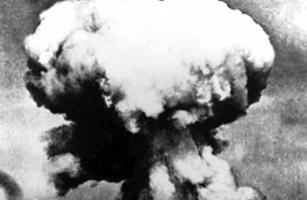
Aug. 6, 1945
Emiko Okada was 8 and playing in the yard with her two little brothers when she saw the blinding light. Then came a boom and and a blast that knocked her unconscious. When she came to, she recalls, "I felt like the sun was falling toward me." Her brothers wailed beside her, their bodies swollen with burns.
Neighbors stumbled by, naked, skin hanging off them in shreds. Corpses littered the road. It was Aug. 6, 1945, in Hiroshima. No one in the southern Japanese city had paid much attention to the distant buzz of three American B-29 bombers overhead. But one of them was the Enola Gay, and at 8:15 a.m. it dropped a single bomb that unleashed the "rain of ruin" President Truman had promised if Japan did not surrender.
An estimated one-third of the city's 350,000 residents—including Korean conscripts and imperial army units—were killed instantly. Many thousands more would die from its radioactive poison in the coming years. The bomb turned glass to liquid, buildings to dust, and people to mere shadows etched on the ruins.
A black rain fell. It looked like oil to Seiko Komatsu, then 9. He saw the rain soak his wounded grandparents. He had been having breakfast in their house when the bomb fell and gutted it. Three days later, the city of Nagasaki was destroyed by another atom bomb. Japan announced its unconditional surrender on Aug. 14.